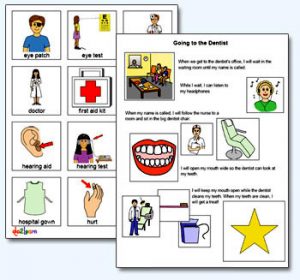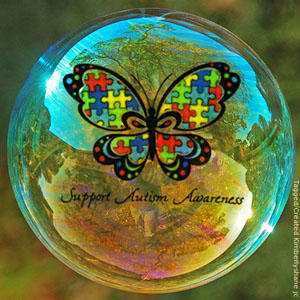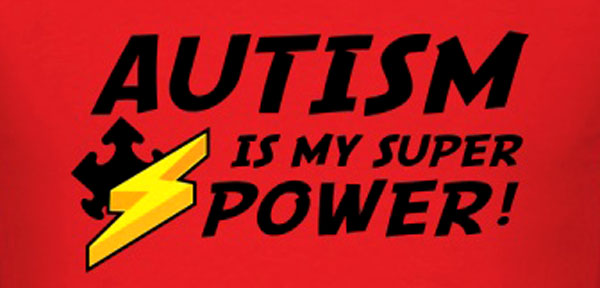A Wordless Farewell
“I can remember the frustration of not being able to talk. I knew what I wanted to say, but I could not get the words out, so I would just scream.”
– Temple Grandin, Professor with Autism
In Wordless, we discussed ways to do therapy with non-verbal individuals. In Beyond Words we looked toward independence built on desires and strengths. Today, we look at that pivotal moment when therapy ends and the “Beyond” begins. As many important moments over the course of therapy have, this moment first took the form of a Social Story.
Social Stories, developed by Carol Gray first in 1993, “help individuals with autism ‘read’ and understand social situations…present appropriate social behaviors… and seeks to include answers to questions that autistic persons may need to know to interact appropriately with others (for example, answers to who, what, when, where, and why in social situations) in the form of a story” (Goldberg Edelson, 2017).
 Simply put, a Social Story is a step-by-step “How to” and/or “Why to” take the appropriate action in a situation. Pictures supported with words seem to work best, unless the individual can’t read (Cosgrave, 2017). They’re like IKEA instructions for daily life.
Simply put, a Social Story is a step-by-step “How to” and/or “Why to” take the appropriate action in a situation. Pictures supported with words seem to work best, unless the individual can’t read (Cosgrave, 2017). They’re like IKEA instructions for daily life.
Social Stories are widely used in working with those with autism and have been adapted for those with other needs as well. What could be seen as Social Stories’ biggest strength—that intervention method itself is adaptable to many people and situations—is actually what has made them controversial. Since they are so versatile, their efficacy has been hard to measure and since they are so individualized the components of success have been difficult to generalize. Since 1993 the discussion has become so polarized that there are those like Gray who stand firm that a Social Story must fit the formula to be considered one, and others like Reynhout and Carter (2009) who declare that “reviews have found the Social Stories that do not meet the guidelines and criteria put forward by Gray are typically more effective than those that do” thus “Gray’s ‘prescriptive guidelines for Social Story construction do not appear to have any empirical or theoretical foundation’ and hence raise ‘questions about their veracity.’” (Cosgrave, 2017).
The Last Story
“Do not fear people with Autism, embrace them, Do not spite people with Autism unite them, Do not deny people with Autism accept them for then their abilities will shine.”
– Paul Isaacs, Author with Autism on Autism
Informed by both sides of the debate, I’ve designed countless Social Stories. These stories fit more in Reynhout and Carter’s mold than Gray’s and have been effective, potentially because they were so individualized, had mostly pictures due to the level of reading ability and tightly fit the situation ahead (Cosgrave, 2017).
 This month I wrote my last Social Story.
This month I wrote my last Social Story.
Well, for one client, at least. It was a story about how to leave therapy and move to an adult group home. We reviewed it often, as part of the formula, and right before leaving the residence we reviewed it again, as that was found to be most effective (Cosgrave, Goldberg Edelson, 2017). But it was even more than effective. It was the signal, the green light that they* took as their moment to shine.
Taking my hand, they slung on their backpack, humming with excitement. The other hand tightly clutched the Social Story. They moved quickly, purposefully to their destination—eager for the adult life ahead. As I saw the story fluttering in their hand I thought of all the past stories we’d shared, and how they all became just paper once understanding and internalizing of the “How to” had occurred and how this story was already being outshined by their learned strength.
Social Stories are all about understanding and access, everyone would agree. As the individual gains understanding of the expectation they can then access their own power to meet it. I was watching it happen yet again, and again I was amazed.
It was for the last time with this fine young person. But there was one more part of the story. I had realized it that morning.
 Over the course of therapy we also had used the Audio Motor Mapping referenced in Wordless because prior to treatment they had been deemed non-verbal, but with intervention to build the skills and Social Story to give the skills direction, they grew to be semi-verbal; using many sentences to meet their daily needs.
Over the course of therapy we also had used the Audio Motor Mapping referenced in Wordless because prior to treatment they had been deemed non-verbal, but with intervention to build the skills and Social Story to give the skills direction, they grew to be semi-verbal; using many sentences to meet their daily needs.
One of our Social Stories years prior was on when to say “Hello/Goodbye” and we had practiced for months. That paper had faded away years ago and the skill had become a part of them. As they settled happily in the van that would take them to their adult life, they waved and said—bright eyed and smiling—“Goodbye.”
The American Counseling Association Code of Ethics (2014) states that the first “core professional value” is “enhancing human development throughout the life span” as guided by the “fundamental principles of professional ethical behavior” with clients to promote “autonomy or fostering the right to control the direction of one’s life; nonmaleficence, or avoiding actions that cause harm [and] beneficence, or working for the good of the individual and society by promoting mental health and well-being.” I believe that as long as the intervention is proven to do no harm, then we should put our professional debates as a lower priority than helping our clients. Though debate has a vital role in improving the quality of care, all helpful avenues should be examined if they lead to a better life for our clients, they deserve nothing less.
No matter if the Social Stories used fit Gray’s original formula or the flexible method surveyed by Reynhout and Carter, their effectiveness as an evidence based practice which enhanced this individual’s development and autonomy while doing no harm was right there in front of me.
Smiling, Social Story left next to them on the seat of the van, they waved and said “Goodbye.”
Wordless no more.
__________________________________________________
American Counseling Association (2014) Code of Ethics. Retrieved from: http://www.counseling.org/Resources/aca-code-of-ethics.pdf
Cosgrave, G (2017) Are Social Stories Effective? Educate Autism. Retrieved From: http://www.educateautism.com/social-stories/are-social-stories-effective.html
Goldberg Edelson, M. (2017) Social Stories. Treating Autism. Retrieved from: https://www.autism.com/treating_social
*When writing about clients I remove all gender and name references, using informal plural nouns. I prioritize confidentiality and HIPPA over all, and hope it doesn’t detract.


